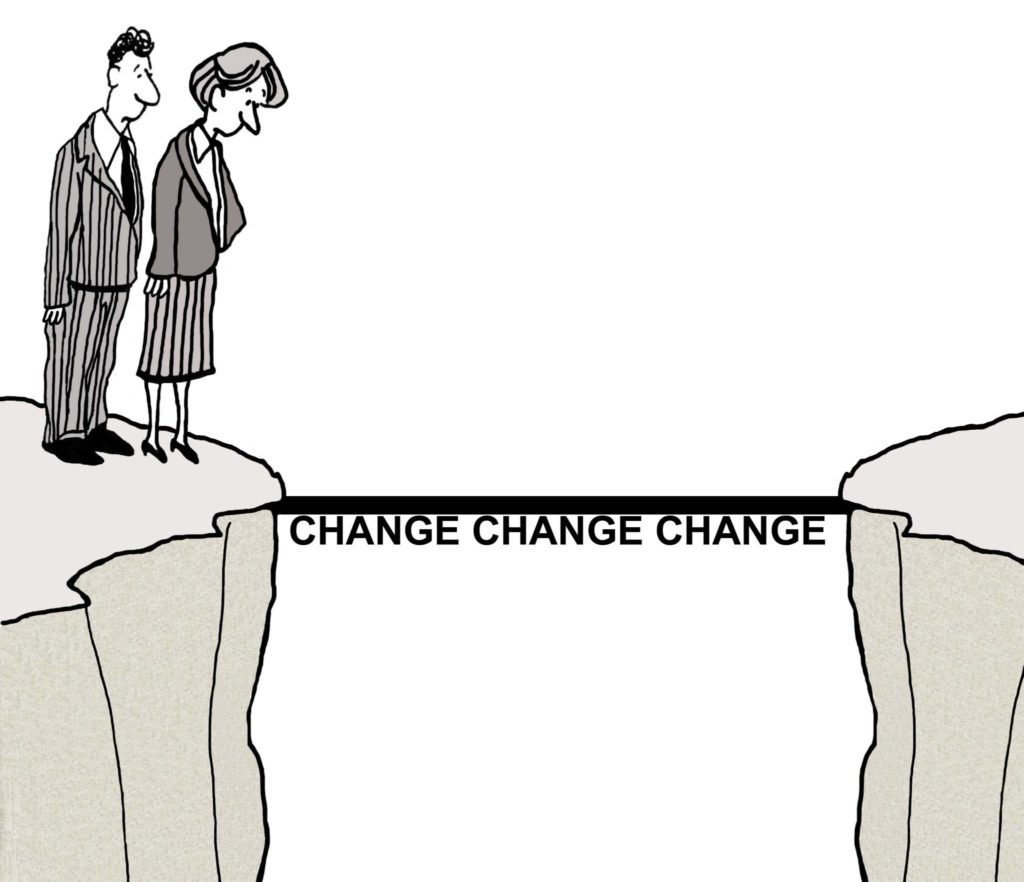If you’ve ever tried to be a change agent at work, you know the kind of resistance you’re up against. You could be recommending a new work process or project management tool that will greatly improve the business—and you’ll champion it—and people will suddenly get very busy.
Asking a team to give up a work process they’re used to—even if it’s highly flawed—and learn something new can feel overwhelming for teams that already have a lot to do.
Yet, when people do agree to a change, it’s the transition process that gets tricky.
In the world of transition management, there are three recognized phases of transition. For anyone leading a change initiative, the more you understand the practical and emotional journey that your team members might be going through, the more effectively you can shepherd your team through the transition.
Keep in mind that everyone goes through the three phases at their own speed. It’s like a marathon, where the racers spread out over time. In your case, it’s important to keep your eye on the players and help them through the process.
Here are the three phases of transition, and how acknowledging each one can help you have your own successful transition to a new and better way of working.
Phase 1: Letting Go
The first phase of transition is letting go of the existing process or tool. At a practical level, this is about finishing off outstanding tasks and phasing out any work done under the old regime. But there’s a lot more going on at the emotional level. Team members may mourn the loss of a system or a process that they’re used to. No matter how limiting or problematic the outgoing system, people understand it and feel safe using it. And most of us like to operate within our comfort zone—even if this limits growth or evolution opportunities.
Tips for getting through:
Show as much empathy as you can. Acknowledge how your team members feel about the change, and help them come to terms with giving up a system they’ve come to depend on. Be aware that people can get stuck in phase one if you don’t listen to them or take their concerns seriously. It’s going to be harder for some people to experience a change to their daily routine. So take the time to understand what people are going through and ask them how they feel.
Phase 2: Passing Over Uncertainty
In the second phase, people have let go of the old and are actively working toward the change. Now you have people implementing the new process or new software tool. But things haven’t quite settled or solidified yet. Team members continue to navigate the uncertainty between what was, and the emergence of the new rules of the road. There are still many questions, which can be frustrating for those who like predictability and routine.
Tips for getting through:
Acknowledge the ambiguity that exists while implementing strategies to bridge the gap from old to new. You can do this by openly recognizing that some questions are still unanswered and by inviting the team to help answer them. It’s not up to the team leader alone to define the new processes and resolve issues, but for the team as a collective to work through the queries that come up. During this phase, it’s important to strike the right balance between asking questions and providing answers. Asking the right questions enable team members to take ownership of solutions; providing answers will establish some security and certainty as the vision of change unfolds.
During this phase, it helps to remove obstacles. If you’re implementing new software, provide training, and have product experts at hand to support the team. Continue to listen to people’s concerns and reward people for making the change happen.
Phase 3: The New Beginning
This “New Beginning” phase happens when the change has been fully accepted and is operating effectively within the new environment. Team members are emotionally on board and are creating new habits that can be sustained. A new comfort zone is emerging that needs to be strengthened so that people don’t revert back to phase two.
Tips for getting through:
To support team members through the New Beginning phase, it’s important that you reinforce and sustain the change through people, systems and processes. Collaborate with individual team members to set short-term goals that are easy to achieve and that generate quick wins. It’s incredibly rewarding to see tangible results being implemented. Don’t let up too early as on-going progress is required to keep the momentum.
To make the change stick, embed it into your corporate culture and the organization’s day-to-day work—if you can. Continue to empower and engage people, by making them feel part of your new process. Encourage them to organize trainings and workshops, or to give feedback on improvements to the new system. Make people feel like their contribution is part of the team’s success—this alone will make a big difference!
Are you wondering whether your project management process is working for you? Here’s a way to find out—take our 9-question diagnostic, the Project Management Health Check.







